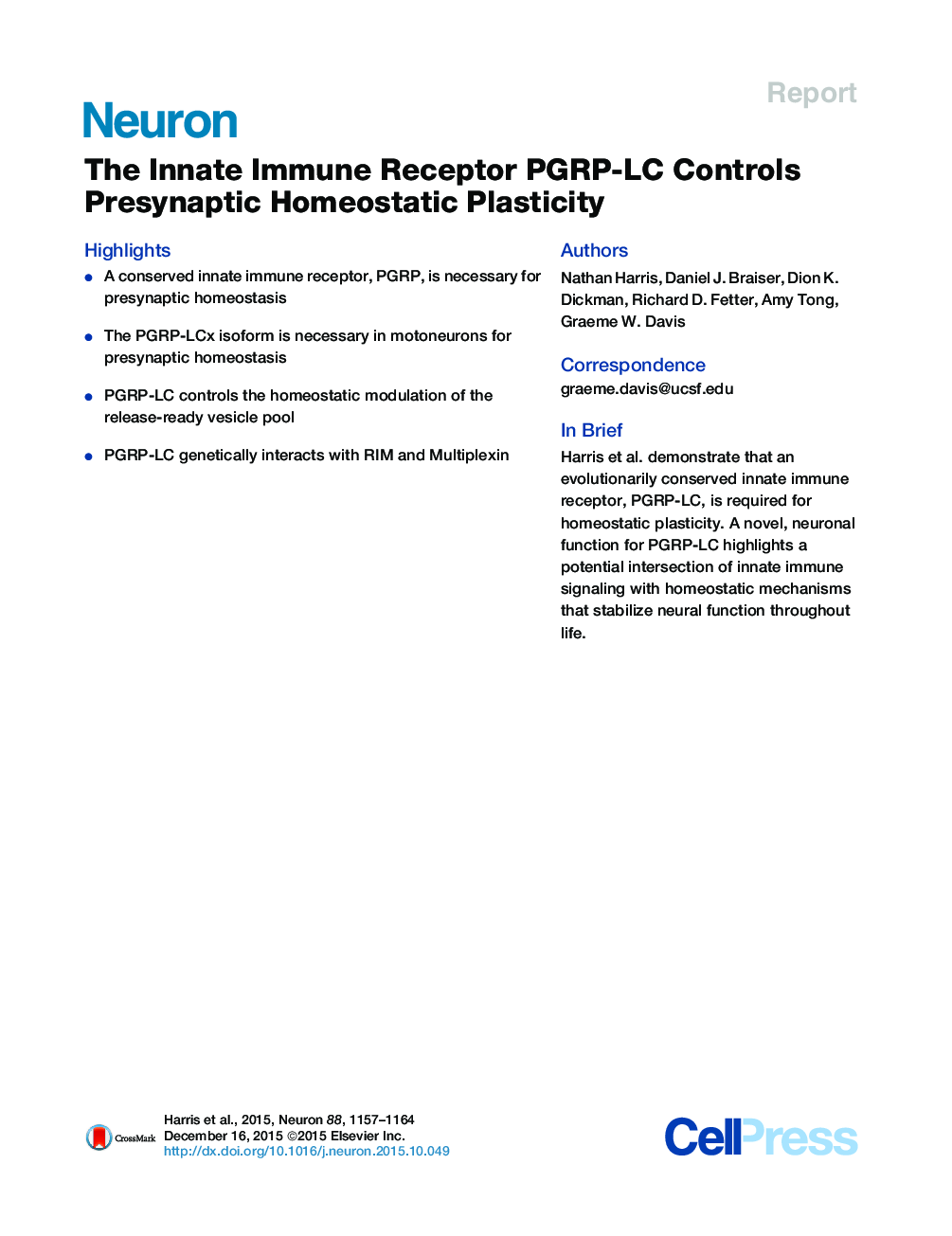| Article ID | Journal | Published Year | Pages | File Type |
|---|---|---|---|---|
| 4320753 | Neuron | 2015 | 8 Pages |
•A conserved innate immune receptor, PGRP, is necessary for presynaptic homeostasis•The PGRP-LCx isoform is necessary in motoneurons for presynaptic homeostasis•PGRP-LC controls the homeostatic modulation of the release-ready vesicle pool•PGRP-LC genetically interacts with RIM and Multiplexin
SummaryIt is now appreciated that the brain is immunologically active. Highly conserved innate immune signaling responds to pathogen invasion and injury and promotes structural refinement of neural circuitry. However, it remains generally unknown whether innate immune signaling has a function during the day-to-day regulation of neural function in the absence of pathogens and irrespective of cellular damage or developmental change. Here we show that an innate immune receptor, a member of the peptidoglycan pattern recognition receptor family (PGRP-LC), is required for the induction and sustained expression of homeostatic synaptic plasticity. This receptor functions presynaptically, controlling the homeostatic modulation of the readily releasable pool of synaptic vesicles following inhibition of postsynaptic glutamate receptor function. Thus, PGRP-LC is a candidate receptor for retrograde, trans-synaptic signaling, a novel activity for innate immune signaling and the first known function of a PGRP-type receptor in the nervous system of any organism.
